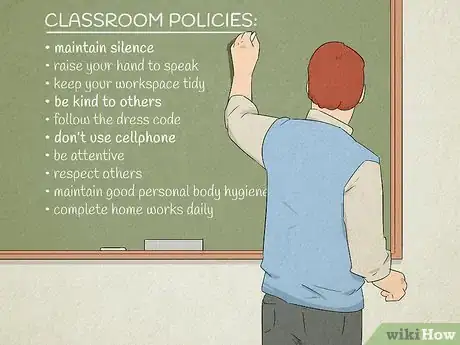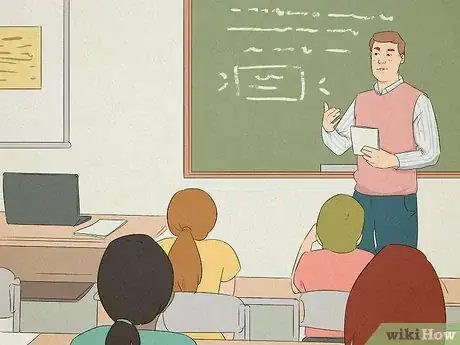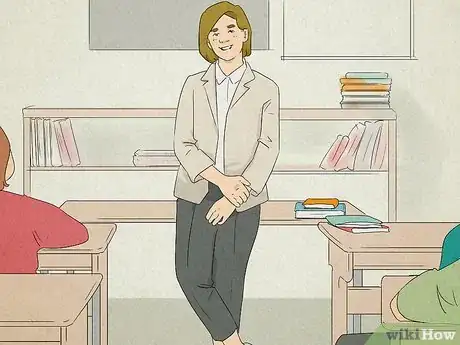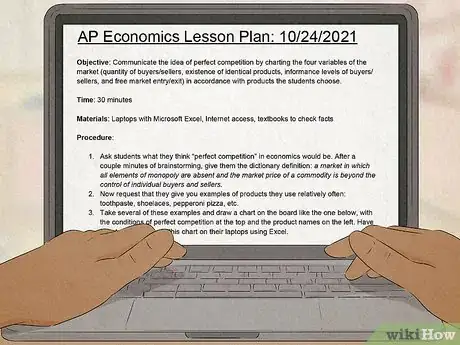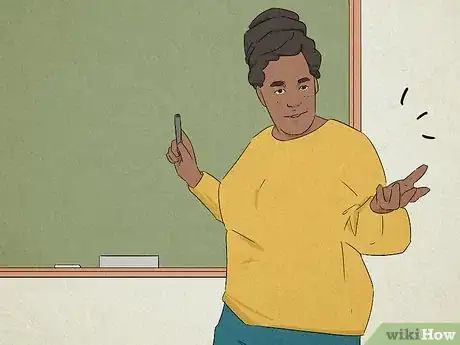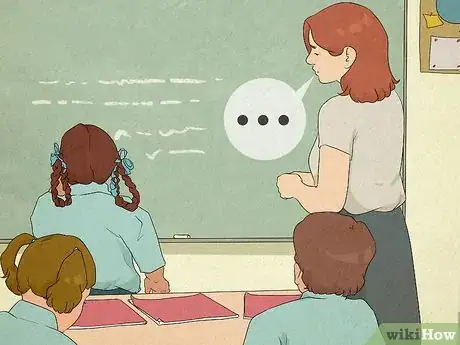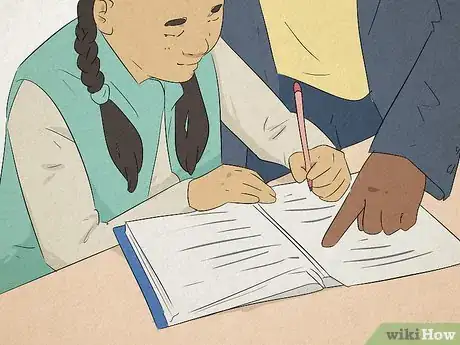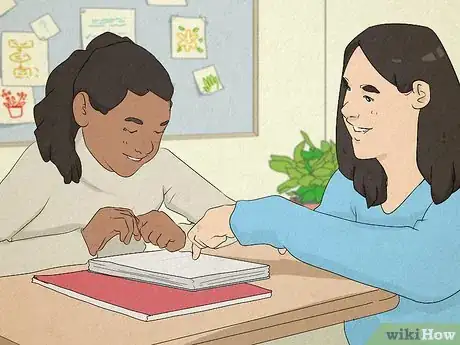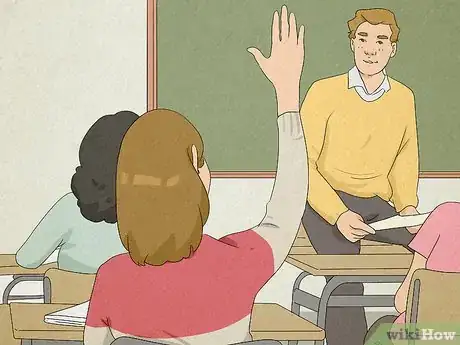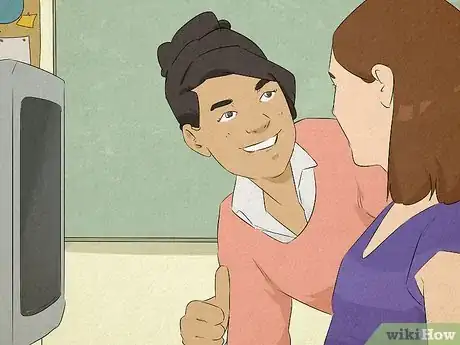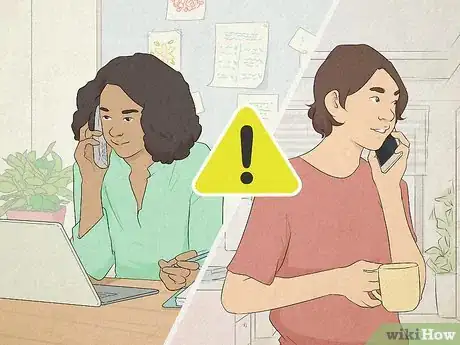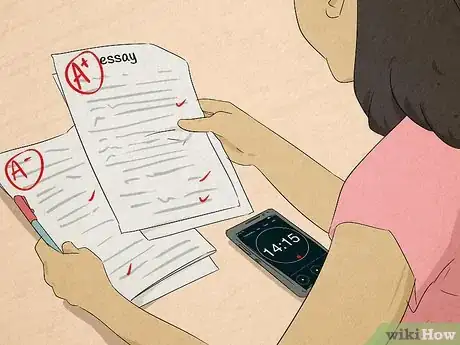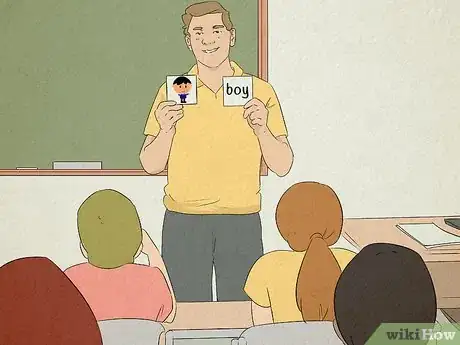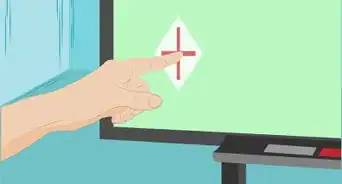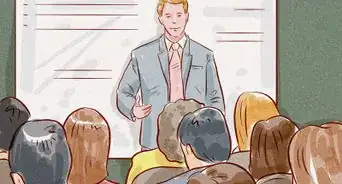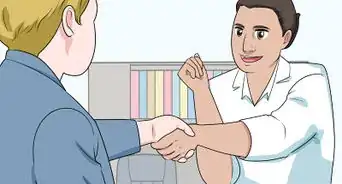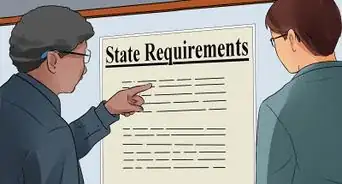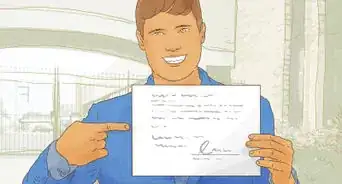This article was co-authored by Paige Bowen, MA, EdM. Paige Bowen is a Physical Education Teacher at Oconee County Primary School in Watkinsville, Georgia. Paige has over 20 years of physical education teaching experience. She was awarded the Oconee County Primary School Teacher of the Year for 2002-2003. She received a B.S.Ed. in Health and Physical Education from the University of Georgia in 1996 and an M.Ed. in Early Childhood Education in 2003 from the same institution.
wikiHow marks an article as reader-approved once it receives enough positive feedback. In this case, 100% of readers who voted found the article helpful, earning it our reader-approved status.
This article has been viewed 50,512 times.
Like any other meaningful, worthwhile career, teaching has a learning curve. But the skills that make a great teacher are habits you can build and learn over time. Once you’ve learned to feel comfortable in front of your students, teaching will become a fun and even-more rewarding job. You can become a successful teacher (at any pedagogical level) by preparing ahead of time, successfully managing your classroom, and engaging directly with students. We've put together a guide to help you boost the key skills you need to become a successful teacher.
Steps
Managing the Classroom
-
1Decide on your classroom policies, then follow through. It’s important to show your students that there are specific guidelines that they need to follow in your classroom. Clearly state these policies on your syllabus, and expect your students to follow the policies. For example, consider:
- Will you allow students to use their cell phones while in class?
- Can students take notes on a laptop computer or tablet?
- How many times can a student arrive late before they lose points?
- Although some of these may be school-wide policies that you have no control over, you should still enforce and follow through on them.
-
2Maintain your authority over the classroom. While teachers should not be seen as authoritarian, it’s important that you do act with authority. Show that you are effectively leading the class by explaining the daily class schedule ahead of time, and keeping the class focused on the lesson.
- Be clear that when you are speaking, all student conversation needs to stop.
- Don’t hesitate to call out individual students; say something like, “Please don’t speak over me, and raise your hand if you have a question.”
- Politely but firmly insist that students put away their phones, and computers as well, if your students are browsing the internet rather than taking notes.
Advertisement -
3Dress like a professional. The way you dress and act plays a large roll in how you are seen by your students. Both men and women—especially teachers in their 20s—should dress professionally.
- Wear a jacket, a shirt and tie; wear a dress or skirt to look more professional and, consequently, more authoritative.
-
4Plan out how the class will spend its time every period. This should be a standard part of your lesson planning. It’s better to plan too many activities for any given class period than too few. If you have an extra activity, save it for a day when you get through your lesson more quickly than anticipated.
- Aim for each activity to take about 25 minutes. This will give you a rough estimate of how many activities you can plan in a class period. If you have a 50 minute class period, plan on two major activities.
- Have your students complete a quiz and then participate in a group discussion. Or, for younger students, ask them to complete a hands-on activity in a group, then individually write a summary of what they learned.
- Don’t plan to improvise or change plans in the middle of class.
EXPERT TIPPaige Bowen is a Physical Education Teacher at Oconee County Primary School in Watkinsville, Georgia. Paige has over 20 years of physical education teaching experience. She was awarded the Oconee County Primary School Teacher of the Year for 2002-2003. She received a B.S.Ed. in Health and Physical Education from the University of Georgia in 1996 and an M.Ed. in Early Childhood Education in 2003 from the same institution.Primary School Teacher
 Paige Bowen, MA, EdM
Paige Bowen, MA, EdM
Primary School TeacherOur Expert Agrees: Be sure to include a few minutes between activities to give yourself and the students time to transition. Moving on from one activity to the next takes time as students might have to move around or get supplies. Adding in just 3 to 5 minutes can keep you from feeling rushed.
-
5Act confidently, even if you don’t always feel confident. One of the most challenging parts of teaching—especially for new teachers—is showing confidence in front of a classroom full of strangers. Even if you don’t feel confident at first, fake it—students usually can’t tell the difference, and your classroom successes will turn into genuine confidence soon enough.
- Use occasional humor in the classroom. Humor can often show confidence; it makes you look like you are in control of a situation if you can inject occasional humor.[1]
- Show confidence by your physical presence. Don’t huddle in a corner of the classroom. During every class period, stand up, move around, gesture with your arms, and write on the whiteboard. These motions will make you appear confident and dynamic.
Working with Students
-
1Give your students plentiful and constructive feedback. Students enjoy and expect feedback from their teachers; it shows that you are personally evaluating their work, and that you have firm standards in place.
- When grading a student’s essay, try leaving four or five comments on the body of the essay, and then a three to four sentence paragraph at the end, where you detail the major successes and failures of the essay.
- Give your students verbal feedback in class. Encourage their comments, and gently push them to develop more complex ideas and solutions.
-
2Engage personally with your students during in-class discussions.[2] This will communicate your respect and consideration for the individual student.
- Your student will, in turn, have a greater respect for you if it’s clear that you know his or her name and care about his or her education.
-
3Treat students with kindness. Showing your students respect and kindness should be a guiding principle when you engage with your students.
- This is true in all settings in which you communicate with students: in the classroom, in your office hours, over email, or in any other manner.
- Listen when they speak and do not speak over a student.
-
4Give your students the benefit of the doubt. It can be easy for teachers to forget that their students have a life outside of the class & required homework. However, you need to remember that many students have busy schedules and complicated personal lives.
- If students claim to have had a health problem or family emergency, evaluate their claim with objectivity.
-
5Encourage your students. Many students see their teachers primarily as disciplinarians; they view a teacher as someone who punishes them for doing poorly on an assignment or for speaking out of turn in class.[3] Contrary to this, through your own enthusiasm for the class topic and the materials that you are teaching, you should encourage and inspire your students to learn about the class topic.
- Praise students individually and collectively for their work.
- Find aspects of the class work that each student engages with, and encourage the students to develop their own interests within the class.
-
6Establish boundaries for you and your students to follow outside of the classroom. Many inexperienced teachers plan to befriend their students, and to treat them like friends outside the classroom. This can lead to encounters that may appear unprofessional, and a lack of a formal relationship between you and your students.
- Make it clear to students how they can contact you. For example, give them your email address, but avoid handing out your cell phone number.
- Be clear with your students about how long it will take for you to reply to their emails. Will you try to reply within the same hour, or within a 24-hour period?
- Avoid meeting with students off campus. If you must, meet at a coffee shop; avoid meeting in places that serve alcohol, as it could send a misleading message.
Planning Your Lessons
-
1Do your class preparation and lesson planning well in advance. For teachers, few experiences are less enjoyable than staying up late the night before a class, preparing the readings or assignments that your students will complete the next day. Keep your work organized, and plan each lesson ahead of time.[4]
- It helps to have written lesson plans. At the beginning of each week, write down your lesson plan for each class you will teach.
- Do your class preparation (writing assignments and quizzes, preparing videos, etc.) at the beginning of the week as well.
- Monthly calendars are often helpful for a “big picture” approach. Preparing a detailed calendar a month or two in advance will help you schedule the various segments of the course you’re teaching.
- If you’re teaching at the high school or college level, consider sharing the calendar with your students (even if the calendar will change slightly as the course develops).
-
2Establish a regular schedule for your grading. Many inexperienced teachers find themselves quickly bogged down in grading seemingly endless papers and tests. To avoid this, figure out when during the week you have time to grade, and break the total amount of weekly grading down into manageable pieces.[5]
- It helps to use a timer when grading. For example, give yourself 15 minutes to grade each essay, and 5 minutes to grade each quiz.
-
3Use technology that will be helpful to your students. While you do not need to always use the newest, most trendy teaching technique or teach from your students’ favorite website, it will help both you and your students if you use some technology in the classroom.[6] Students quickly become tired of repetitive class structures and lectures. Using technology could mean:
- Create a Powerpoint or Prezi to convey information.
- Show your students a short, relevant film or video that will spark classroom discussion.
- There are even phone-based learning apps that instructors can incorporate into new lessons.
-
4Vary your teaching style and strategy. This will allow you to accommodate different learning styles. Although you, as a teacher, may have a favorite way of teaching your students, consider that various students may learn better through other methods, including verbal instruction, reading texts, conversation, and hands-on experience. Experiment with different teaching techniques:
- Skip the lecture, and instead help your students learn with an active group activity.
- Bring in tangible objects, related to the lesson, that your students can interact with and learn from.
- In discussions, provide a mixture of abstract thoughts and practical examples.
- Take your students on a field trip—even in college!
-
5Let teaching inspire your own learning. Part of the pleasure of teaching students is that, along with sparking their curiosity to learn, you can remind yourself of the pleasure of learning as well. You can allow your teaching to maintain your own academic and personal interests in the subject matter of your classes.[7]
- If you’re permitted, make small changes to your teaching materials and assignments each year; this will keep the material fresh for you and make it more enjoyable for your students.
References
- ↑ http://www.opencolleges.edu.au/informed/features/25-things-successful-educators-do-differently/
- ↑ http://www.edutopia.org/discussion/11-habits-effective-teacher
- ↑ http://www.opencolleges.edu.au/informed/features/25-things-successful-educators-do-differently/
- ↑ http://www.edutopia.org/discussion/11-habits-effective-teacher
- ↑ http://www.edutopia.org/discussion/11-habits-effective-teacher
- ↑ http://www.teachhub.com/teaching-strategies-10-things-successful-educators-do
- ↑ http://www.edutopia.org/discussion/11-habits-effective-teacher
About This Article
To be a successful teacher, start by planning lessons well in advance, so that your classroom time is organized and efficient. As you come up with lesson plans, try to vary your teaching tools to accommodate different learning styles, such as field trips, group activities, or discussions. Additionally, treat your students with respect and kindness, while being clear that you are in charge while they’re at school. For example, don't be afraid to say "Please raise your hand if you have a question," to a student who interrupts you while you're speaking. For advice on how to set personal boundaries between you and your students, keep reading.
